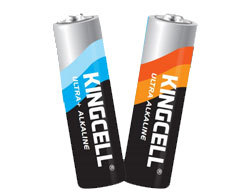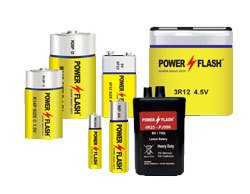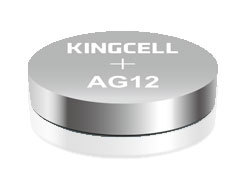La diferencia entre las baterías alcalinas y las baterías de carbono
Tiempo de liberación:
Jun 18,2024
Alkaline batteries and carbon batteries are two common types of batteries, which are different in terms of use, power, and environmental protection. Here are their main differences:
1. Different uses
The use of carbon batteries and alkaline batteries is completely different. Carbon batteries are generally used in devices with relatively small current requirements, such as flashlights, semiconductor radios, tape recorders, cameras, electronic clocks, electronic toys, scientific research, telecommunications, navigation, aviation, medicine and other fields. Alkaline batteries are suitable for instruments that require large discharge and long-term use, such as flashlights, razors, electric toys, CD players, high-power remote controls, wireless mice, keyboards and other daily necessities.
2. Different power
From the basic power point of view, alkaline batteries are more cost-effective than carbon batteries. The capacity of an alkaline battery decreases as the output current increases. For example, the same battery can have a capacity of 3000mAh at low output current, but when used in a load with 1A current, the capacity is only 700mAh, less than 1/4 of the original capacity.
3. Different degree of environmental protection
There is also a name for alkaline batteries: alkaline dry batteries or alkaline zinc-manganese dry batteries. The internal resistance of alkaline batteries is lower than that of carbon batteries, while environmentally friendly alkaline batteries contain only 0.025 percent mercury and do not need to be recycled. Therefore, alkaline batteries are much more environmentally friendly than carbon batteries. The full name of carbon battery is carbon zinc battery. Generally, the positive electrode is carbon rod and the negative electrode is zinc skin, also known as zinc manganese battery. Zinc manganese battery is a common dry battery, it has the characteristics of low price and safe and reliable use, but because the carbon battery contains heavy metal cadmium, it must be recycled.
4. The battery structure and working principle are different
Alkaline batteries are generally composed of three poles, one of which is a nickel-hydrogen reaction pole, and the other two poles are copper and manganese; while carbon batteries generally have two poles, one of which is activated carbon and the other is extremely alkaline. Alkaline batteries generate electrical energy through the nickel-hydrogen reaction principle; while carbon batteries generate electrical energy through the hydrocarbon reaction principle. In addition, the voltage of an alkaline battery is generally 1.2V, while the voltage of a carbon battery is generally 1.5V.
5. Life and safety are different
La vida útil de las baterías alcalinas es generalmente más corta que la de las baterías de carbono, pero las baterías alcalinas son más seguras porque no son fáciles de calentar o explotar, pero las baterías de carbono son más peligrosas porque son fáciles de calentar y explotar. Además, la batería de Nanfu, un representante excepcional de las baterías alcalinas, como compañía avanzada de la tecnología de la batería en China, se centra en el campo de pequeñas baterías, insistiendo en tomar la ciencia y la tecnología como el precursor, el producto como el centro de gravedad, y el cliente como el centro. Cuenta con un centro técnico y una estación de investigación postdoctoral, y ha establecido una serie de nuevos centros de investigación energética en cooperación con universidades nacionales clave y el Instituto de la Academia de Ciencias de China, formando un mecanismo de investigación e innovación científica. Es una empresa con fuerte fuerza científica y tecnológica en el campo de la batería en China. Comprometido a proporcionar a los usuarios tecnología y experiencia en productos y servicios de energía.
Noticias









